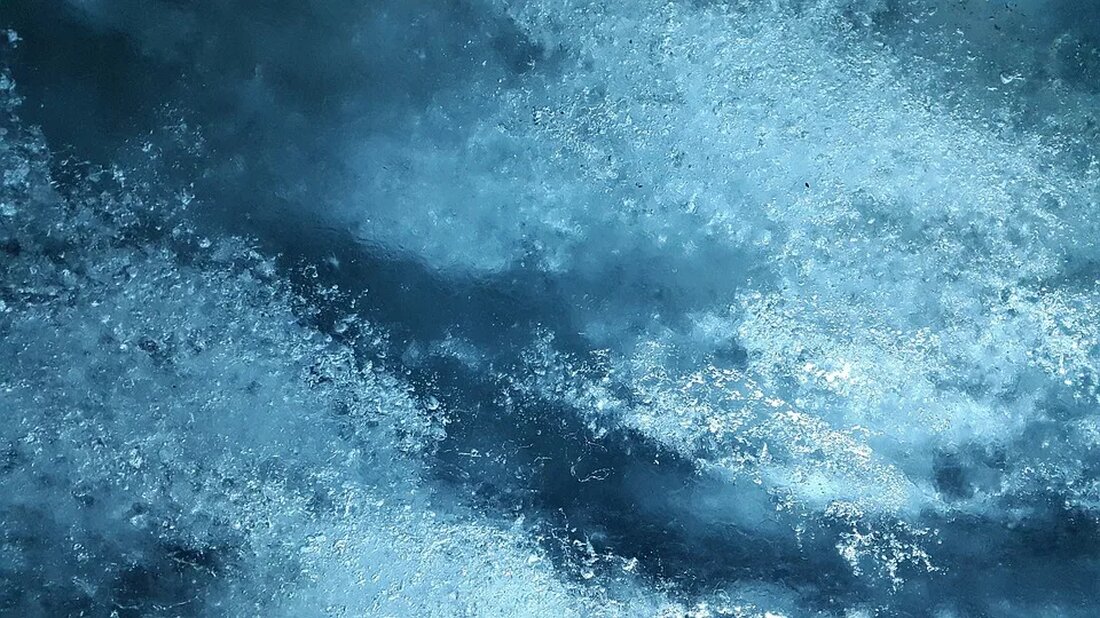Glaciers and their influence on mountain ecosystems
into the glaciers Glaciers are enormous masses of ice, snow, water, rock and sediment that move slowly under the influence of gravity. They are usually formed due to long periods of persistent subzero temperatures and high snowfall rates. These "rivers of ice" extend from the highest mountain peaks down to the valley and can bring about changes in the landscape as well as influence life in the surrounding nature and in the wider ecological context. They are an integral part of many mountain ecosystems around the globe. Glaciers in mountain ecosystems The role of glaciers in mountain ecosystems Mountain ecosystems are unique, particularly because of the steep decrease in temperatures...

Glaciers and their influence on mountain ecosystems
into the glaciers
Glaciers are enormous masses of ice, snow, water, rock and sediment that move slowly under the influence of gravity. They are usually formed due to long periods of persistent subzero temperatures and high snowfall rates. These "rivers of ice" extend from the highest mountain peaks down to the valley and can bring about changes in the landscape as well as influence life in the surrounding nature and in the wider ecological context. They are an integral part of many mountain ecosystems around the globe.
Glaciers in the mountain ecosystem
The role of glaciers in mountain ecosystems
Mountain ecosystems are unique, particularly because of the steep decrease in temperatures along elevations, leading to consequent changes in flora, fauna and microclimatic conditions. Glaciers are a crucial component of these systems and contribute significantly to shaping the landscape and maintaining biodiversity.
Glaciers affect nearby and distant ecosystems in various ways. They are the main source of irrigation for pastures, croplands and drinking water for people in arid areas where running fresh water is scarce. They store water in the form of ice and make it available in the drier months. Therefore, they serve as important water reservoirs.
The effects of glaciers on landscape formation
Additionally, glaciers have been a significant factor in shaping landforms for millions of years through processes such as erosion, transport, and deposition. They create unique geological features such as moraines, troughs and hanging valleys. Glacial runoff also often creates deep, steep valleys and gorges that have a dramatic landscape effect.
Influence of glaciers on flora and fauna
Influence on the plant world
Glaciers also have a significant impact on plant life in mountain ecosystems. Firstly, through their landscape-shaping function, they shape the pattern of plant distribution by leaving behind habitat-creating elements such as patterns of rock, rubble and soil. Secondly, the meltwater from glaciers has a direct influence on water resources, the availability of which determines the type, diversity and density of plant communities.
Impact on wildlife
Glaciers also influence wildlife in mountain ecosystems, primarily by providing water. For example, glacial groundwater sources are crucial for the reproduction of many species of frogs and salamanders in some mountainous regions. In addition, some bird species, such as the bald eagle and various species of fish, have adapted their reproductive behavior, habitat, and foraging to melting glaciers.
The influence of glacier retreat
Consequences of glacier melt
In recent decades, glaciers worldwide have receded due to global warming, which has had a noticeable impact on all affected ecosystems. The retreat of glaciers and the melting of their ice masses lead to drastic changes in water levels and an increased risk of glacial lake outbursts. This can have a significant impact on the aquatic ecosystem and affect local wildlife.
Impact on human societies and their livelihoods
The melting of glaciers not only affects animals, plants and water bodies, but also has a direct impact on human societies. Many rural and semi-urban communities in high mountain regions, particularly in developing and emerging countries, depend on agricultural productivity, which in turn depends heavily on the availability of water from glacial runoff. The retreat of glaciers therefore poses a serious threat to the livelihoods of these communities.
conclusion
Glaciers play a crucial role in mountain ecosystems by regulating microclimates, providing water sources and creating unique landscape and geological features. They are indispensable for preserving local biodiversity and maintaining human livelihoods. Despite their prominent role, they are threatened by climate change and it remains unclear what impact their continued melting will have on the affected ecosystems. The deeper our understanding of the connections between glaciers and mountain ecosystems becomes, the better we can assess the effects of ongoing glacier retreat and potentially counteract them.

 Suche
Suche
 Mein Konto
Mein Konto
